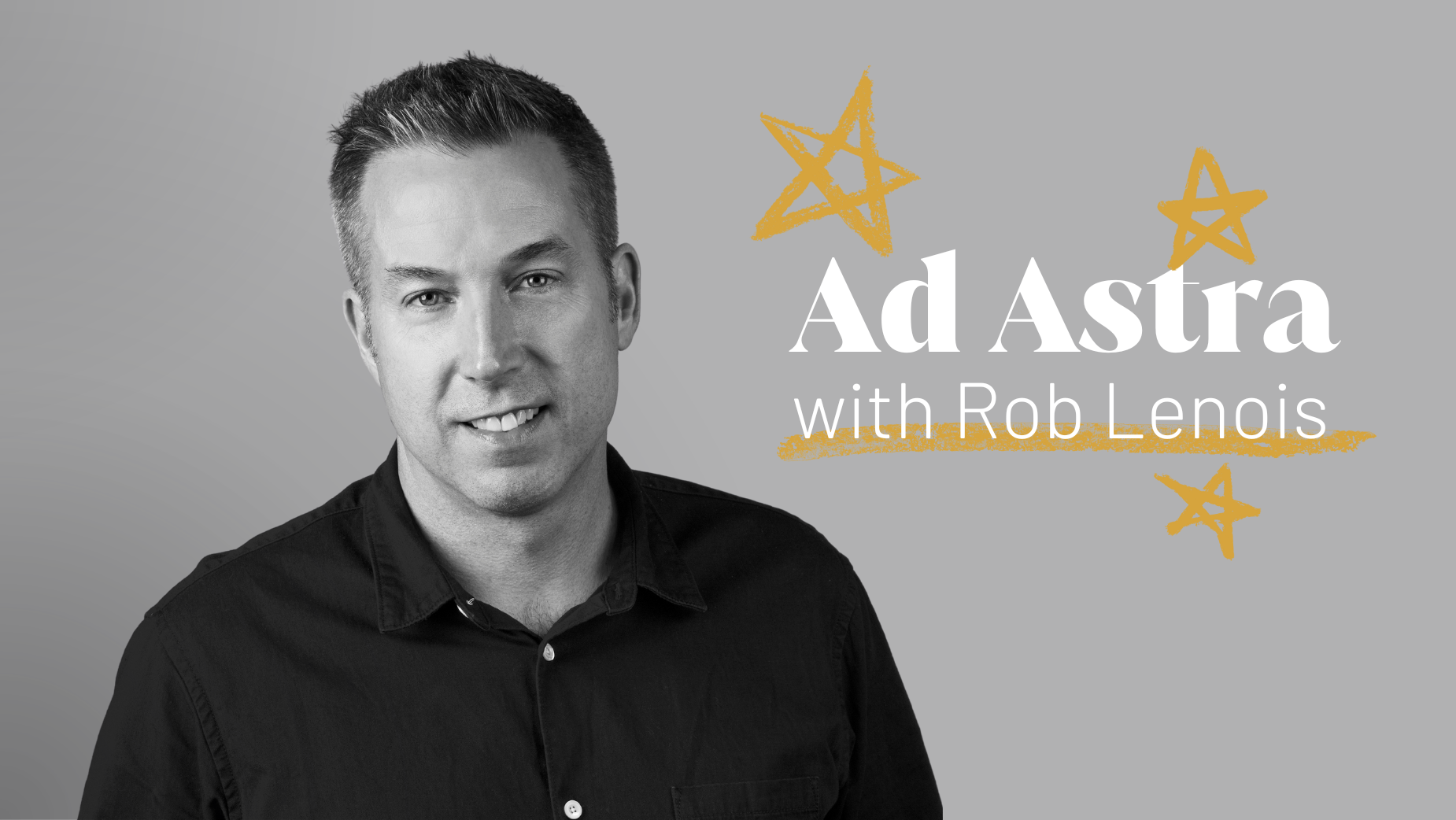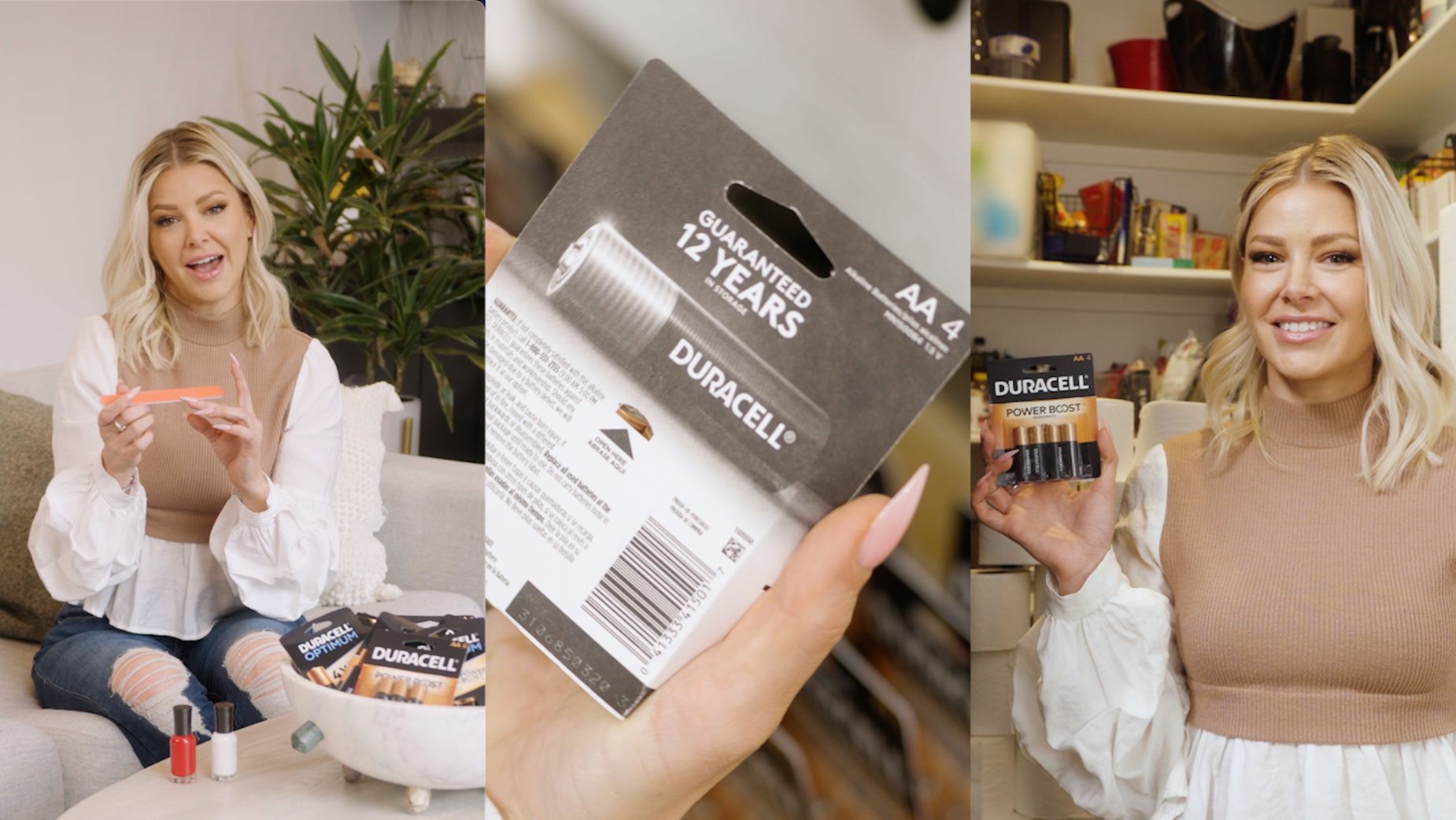
Ad Astra: Rob Lenois Gives a Fuck

Years ago, Rob Lenois’ mother described him as an ‘overachiever, and he still thinks that it’s the most honest and accurate description of him.
“I don’t fancy myself the smartest. I don’t ever fancy myself the most athletic. I never fancied myself the most creative. But I really try to do my best to put in the extra time, the extra energy to excel in a way that I want to excel.” A swimmer in high school and college, and later a triathlete, Rob’s is almost pathologically driven - and that’s as true for work as it was for sport and academia,
It can be boiled down quite simply. “It’s this idea that you can’t teach ‘give a fuck’,” he says. “I am intrinsically drawn to people that really give a fuck. That can be in all walks of life - that can be friends, that can be business partners, that can be people on the team.”
It’s therefore not a surprise that Rob ended up where he is, the chief creative officer at VaynerMedia, the agency founded by the iconoclastic Gary Vaynerchuck, a man who, aside from anything else, certainly gives a fuck too.
Speaking to Rob, it sounds like he’s found a creative home that sparks with something deep inside. With its fast pace and a practice of making as many ideas as possible and testing them on social media, you need to give a fuck. Creating in this electric environment, where even senior leadership is encouraged to make and post something every day, Rob is operating at his preferred frequency - and that’s high frequency.
He’s vibrating with enthusiasm about everything he’s learned since joining VaynerMedia in 2019. And to think, in another timeline, Rob is stagnating in a suit surrounded by spreadsheets, tortured by numbers. At college, he majored in economics and thought he might go into something like investment banking–but as he found himself grinding away at his macroeconomics course the prospect of a lifetime of this was enough to dampen that ‘give a fuck’ enthusiasm.
One summer, as he did his usual lifeguarding job, he had two books to keep him company. Barbarians at the Gate–the tale of the dramatic buyout dealings around food and tobacco giant RJR Nabisco–and Ogilvy on Advertising. The two books squared off in a battle for Rob’s future… and Ogilvy on Advertising won.
“I got really caught up in a love of advertising, a love of commercials. I saw that I could probably jump into the fray–or, at least, my arrogance and confidence saw that I could do that and have success,” he says, laughing at his youthful cheek.
He finished up his degree and started shopping himself around the local advertising agencies. With no portfolio to speak of, he had no hope of going straight into creative but he soon wangled himself an interview for a media role at N.W. Ayers. Ahead of the interview he read a chapter on media, where he stumbled across something that he looks back on as his advertising origin story. The book said that in media, agencies are always looking for top candidates, and that even if they have no opening, they’d try to find a home for you,
And so, at the interview, when the interviewer mentioned that there was no specific opening but that they’d thought Rob was great. Rob, in response, told him exactly what he’d just read.
“I think the interviewer was kind of stumped. I left thinking I had failed and don’t believe everything you read. I was going down the escalator, I’ll never forget it, and the security guards said, ‘they’d like to see you again’. I went back up and I got the job.”
With his foot in the door, he started picking up creative projects, building his book. And before he knew it, he was up and running, building the foundations of his creative approach. He recalls the Bronze Lion-winning Holiday Party ad for Heineken, a Christmas ad inspired by the financial scandals that were creating pain for ordinary people in the early 2000s. It was an early, pre-social media taste of how effective it could be to lean into social commentary and what people were really talking about - something that would become central to Rob's creativity later in his career.
The energy and boldness that got him his first job in the industry are the same qualities that have kept his creativity firing throughout his career.
Of course, not every creative has that same level of passion and drive, not everyone shares his belief that “good work is hard work.”– and navigating that is a challenge, particularly as a leader. On the one hand, says Rob, he knows that some people just need the chance to experience what it feels like to create something exceptional, that ‘oh my God’ moment after slogging away, reworking and reworking. Once you get a taste of brilliance, he figures, you want more of it. But, he concedes, that’s not always the case, and being a creative leader also means accepting that you can’t change people.
“The reality is not everyone's going to have that level of passion. I think it's often meeting people where they are, hopefully helping. You give them the feedback and the clear goals and expectations where things need to go. But I think being very aware of people's different frequencies and not everyone works the same way. And not everyone's willing to put in the extra time, energy and effort,” he says. “That will sort itself out in a way where they will end up. I've never been a driver, walking around, carrying a stick making people do. I think the people that want to go the distance do, and the ones that don't either invariably find out that this isn't necessarily for them or they're just happy having a different level of success.”
With that drive, perhaps leadership was inevitable, but Rob says it was working with Tor Myhren, the now VP of marketing comms at Apple, when he was at Grey, when everything really clicked into place.
“He said something to me: very, very clearly, he said, ‘Lenois, you can go as far as you want in this business’. And I had never heard that before. Candidly, I'm not even sure I fully believed him in the moment,” he recalls. It was the right piece of advice at the right time for Rob. He’d started to find creative success at Grey, with campaigns like the Febreze ‘Breathe Happy Social Experiment’ which leveraged provocation and the power of the product and challenges the ‘light and airy’ category norms. Personally, he’d also cleaned his act up and was ready to go.
“It took me about a few months, but I finally understood what he meant. And I also believed him, and I had success after that. And that is when I set my sights on his job, right? Maybe not necessarily at Grey. But somewhere I wanted to lead an agency, I wanted to lead a department. I wanted to be a CCO.”
Now that he’s there, Rob says that as high and exacting as his standards are for the work, his sense of responsibility to the people is even more important. He thrives on seeing people grow, of seeing his teams share success or ‘touching the carrot’ as he describes it. “I actually also took a page from Tor’s book that day, when he said to me, ‘you can go as far as you want in this business’. I see people that I believe can do the same, and I share those exact words with them, if I believe it.”
As a chief creative officer at Vaynermedia, however, Rob’s also discovered that he’s still learning. The agency’s ethos of putting ideas out in the world and seeing which ones resonate and are worth investing more in. It has required a re-set. In more traditional agencies, Rob was used to being ‘judge and jury’ of ideas. Now, with the practice of putting ideas into the world, he sees creativity as a collaboration between maker and audience. The analogy he puts forward is of a stand up comedian, who tests jokes with a small audience, feels which jokes trigger the most laughter and builds up that material before taking it to a bigger comedy club.
Rob calls the process ‘finding’. “This isn't spray and pray, right? This is us putting creative ideas into the world and just following the traction, following the applause following the laughter. And then, when something lands, really having a conversation of why it’s landing, that's the insight that becomes the brief. And then we build on top of that.”
It’s also an exercise in humility. Creativity is no longer the domain of a single creative director’s mercurial whims. “Where I get incredibly excited is when a team shares something with me that I don't understand, that I might not even like, but I have the humility now to take a step back and go, ‘okay, 50 year old white guy alert, you go, you do it, it's to an audience that maybe I don't fully understand or get’. Those things go on to the world and they blow up on social. And that just excites the shit out of me.”
One recent example saw a whole campaign spring from a cheeky social post in response to some buzzed-up reality TV drama. Ariana Madix, star of the show Vanderpump Rules, had been cheated on by her boyfriend, who justified his actions because he was the one who bought the toilet paper and batteries and such. The team sent out a tweet from client Duracell in support, saying ‘Duracell's guaranteed to last 12 years - that's much better than 10’. It generated thousands of comments and within 48 hours the team was on set shooting a commercial with Ariana.

There’s a bittersweetness, though, that undercuts that excitement. Rob says he now often thinks about the potentially great ideas that never made it out into the world because he killed them. “That's been a challenge and a joy, the letting go, not flexing, your perceived strongest muscle over what you think is good.”
Another extreme learning curve has been Rob’s efforts to put out a piece of content every day on his own social platforms. Yet another humbling experience as a Gen-Xer leading an agency of social natives. But it’s a practice that keeps him alive and connected to hands-on creativity.
“I love the idea of making. Someone said to me, once in my career, that when you promote a creative, you lose a good creative and you get a mediocre manager. That really rang true with me, because I think in our hearts, all creative people love to make stuff, right? That is what's in all of us:the desire to create something, put it in the world and see where it goes,” he says. “I think one of the best things about making and being what we call ‘in the dirt’ is the ability to learn.”
It’s something that reverses the dynamics of creative and chief creative officer. While most of the time, the creative is making themselves vulnerable by sharing their weird and wacky ideas… Rob’s team have seen him dancing in the aisles of Wegman’s for content. It’s a great leveller, and Rob would much rather be learning by doing than giving up and proclaiming himself too old for Tiktok.
That openness also carries over to how Rob relates with clients. “I think the more open we can be, the more transparent we can be to this notion of blurring the lines is where we have our best success, right? We don't even consider them clients, we consider them partners. And where we have that relationship where we can be incredibly honest, right? No fear, no trepidation, just the ability to lay it out on the line.The work is better, and the business result follows suit,” he says. “The other thing that we say here a lot - and this is an incredibly contrarian to how I came up - is [to see the] client not as approver but as contributor.”
That flexibility, humility and rapid response has been an excellent training ground for this new age of AI creativity. When it comes to identifying and understanding trends, Rob says it’s been a game-changer. For now, when it comes to gen AI and client content, he’s circumspect about the untested legalities.
Ultimately, Rob believes that human creativity will always be the driver. As an example, he uses AI to generate bedtime stories for his son, based on his elaborate requirements - it seems both father and son share the same high creative ambitions. ChatGPT may do the work, but it wouldn’t have created anything without his son’s prompt, a request for a story about ‘a giant rhinoceros beetle that has the tail of a scorpion and does battle with a megalodon the size of the house’.
“I think AI is very good at distilling information. One of the things we use AI for is to really understand trends. If you don't really understand the trend, put it in AI, the amount that it will spit out, it'll make you a fucking expert, like, boom, overnight, or in seconds… I think where the creativity can come, and the reason I led with my son's story, is in the prompt, right? I think prompt is actually going to be almost like the brief, and then AI is going to execute the brief . But the more creative the prompt - the human input - the more interesting the story is that ultimately comes out.”
But as much as the industry is romping after the artificial intelligence hype train, Rob believes that the future of advertising creativity really lies in this collaborative, expansive social approach or watching living ideas die and thrive in the wild that VaynerMedia has pioneered. In that context, AI will help creatives get closer to the conversation, unlocking more opportunities for ideas. “We really do see brands are built in social right leaning into the conversations that are happening in social, to fuel our insights to fuel our ideas, is the future of advertising,” he says.
Whatever happens though, one thing will remain the same. Rob Lenoix will still continue to give a fuck.













